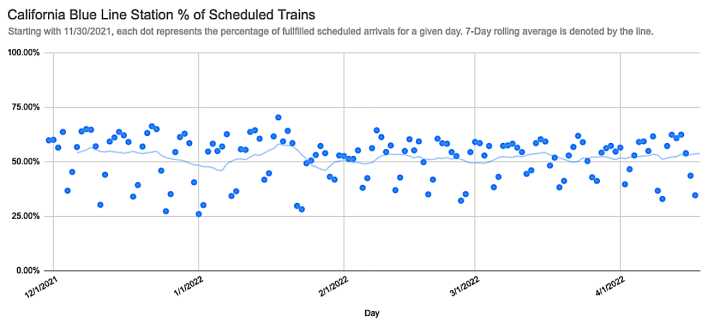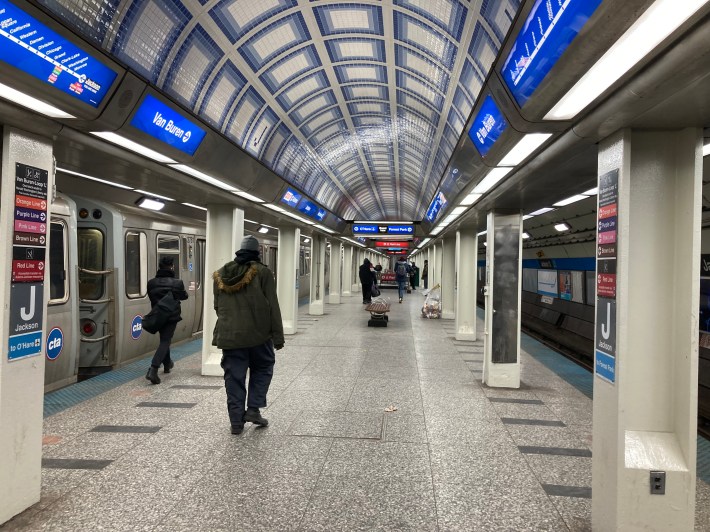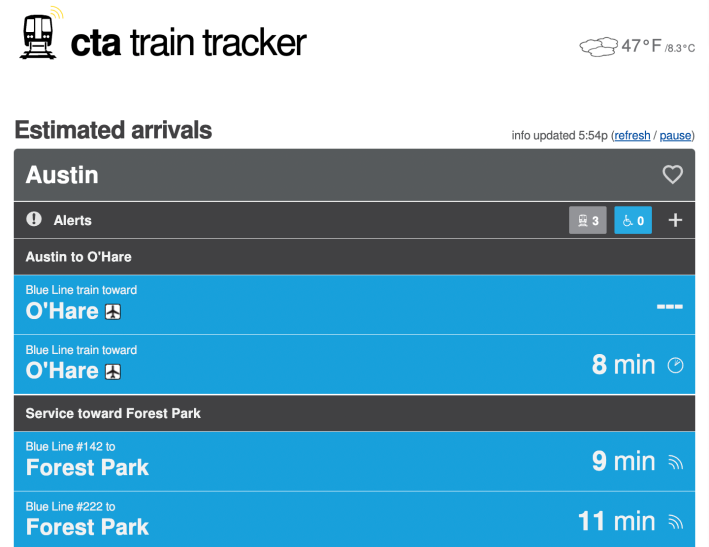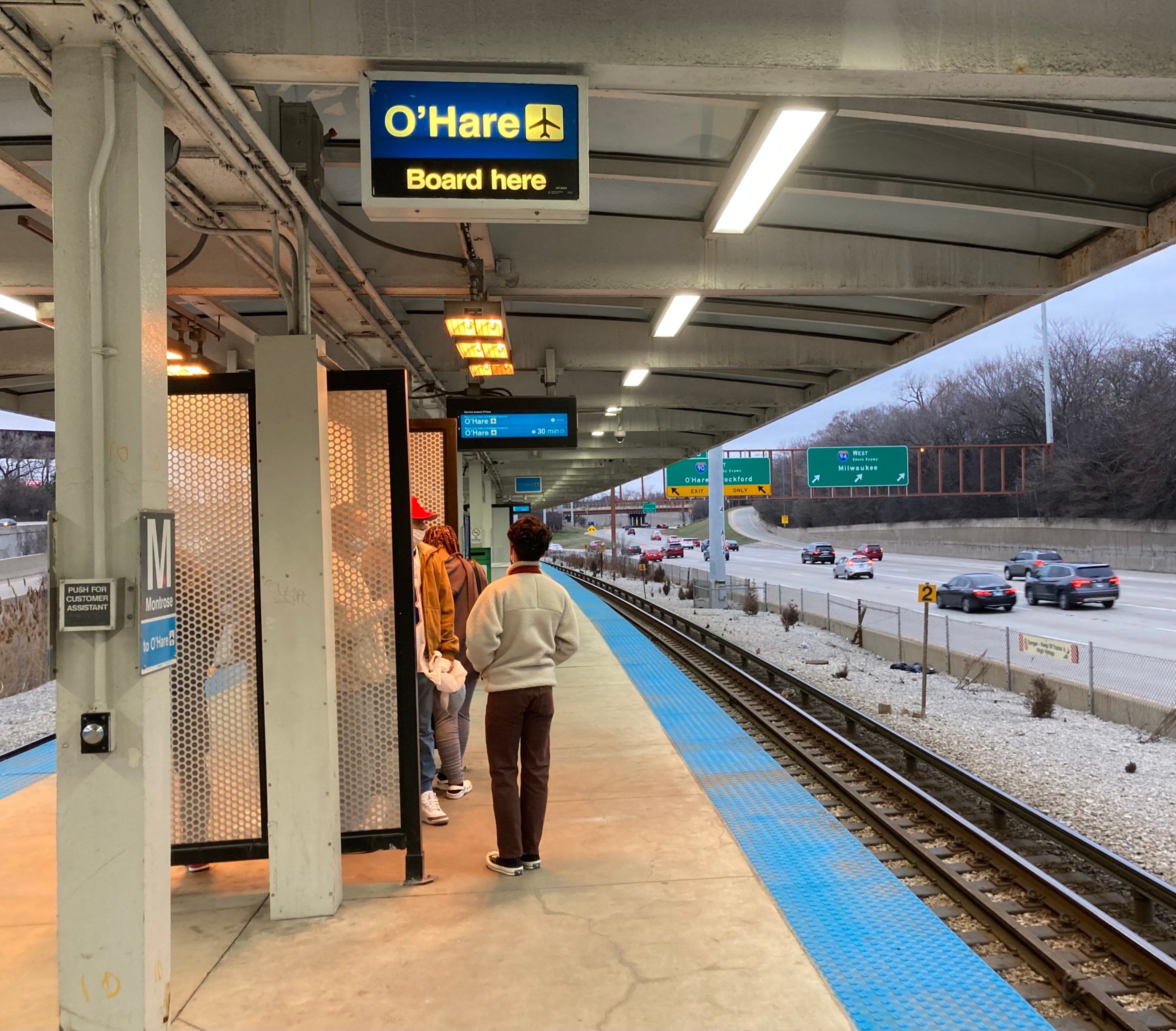While Mayor Lori Lightfoot has often boasted that Chicago was the only major U.S. city that didn't cut transit service during COVID-19, that was only true on paper. The city eventually acknowledged the number of CTA train and bus runs has been significantly reduced due to pandemic-related staffing shortages. Nowadays the transit agency even runs customer alerts basically apologizing in advance for longer-than-usual wait times between runs due to less service.

The Active Transportation Alliance recently connected Streetsblog Chicago with Fabio Göttlicher, a mobile developer and frequent Blue Line rider who was fed up with the service gaps. Göttlicher analyzed Blue Line Train Tracker data and concluded that since early December 2021 the CTA has been fairly consistently running roughly 52 percent of its scheduled Blue Line service, and the number of trains has particularly dropped off at night and on the weekends.
"Like any other passenger, I've noticed the decreased service reliability on the 'L' as well as buses since the start of the pandemic," Göttlicher said via email. "However, the CTA has repeatedly failed to acknowledge the extent of the de facto service cuts. In August 2021, I submitted a letter to the monthly CTA board meetings to bring attention to this; However, it was not met with any real response. After that, I used my programming skills to develop an automated blue line tracker which continuously records real-time [Blue Line] service levels at my home station at California/Milwaukee and then compares them to the scheduled levels."
Göttlicher says this isn't just an issue of occasional service gaps, but rather that the CTA hasn't even come close to following its official schedule on any since day for several months. Here's his graph summarizing the service levels over the pas four months.

Göttlicher told us he's interested in tracking the service levels on other 'L' lines, as well as bus routes, although that would require a significant amount of work, because the tracking systems for trains and buses that the CTA provides are pretty different from each other.
"I am definitely sympathetic over the staffing situation," Göttlicher said. "And I certainly place no blame on this on the individual bus and rail operators. All I am asking for is better communication about service levels, the narrative for which seems to be controlled by the CTA leadership."

"The CTA keeps receiving state and federal subsidies, including federal COVID relief funds to offset fare collection loss, to provide a full level of service," Göttlicher told us. "Sure, costs have risen in the past two years, but one can't expect the CTA to be spending as much money to only provide half of the services they used to."
"Ghost trains and ghost buses are quite frustrating," Göttlicher noted, referring to the now-common situation where train or bus runs appear the trackers, but then disappear before they ever arrive "In my experience, the ghost trains and buses usually tend to happen when there are not enough actual vehicles on the system, so the tracker software backfills the arrival board with scheduled information, but that doesn't end up matching reality. In an ideal world, the schedule would closely match the real service, so this backfilling wouldn't be an issue, but when there's such a disparity between schedules and real service, it becomes such a headache."

"Even CTA's official support team is now giving out tips to passengers to only rely on tracked trains which show the WiFi icon (e.g. live-tracked trains.)" Göttlicher said. "As part of this push, we need to ask the CTA to update their tracker software to be able to respond better to current situations. As a software engineer, I'd even gladly donate my time for this."
Early last week Streetsblog asked the CTA for an explanation of the ghost train and ghost bus phenomenon. Today the agency promised to get back to us in the near future.




